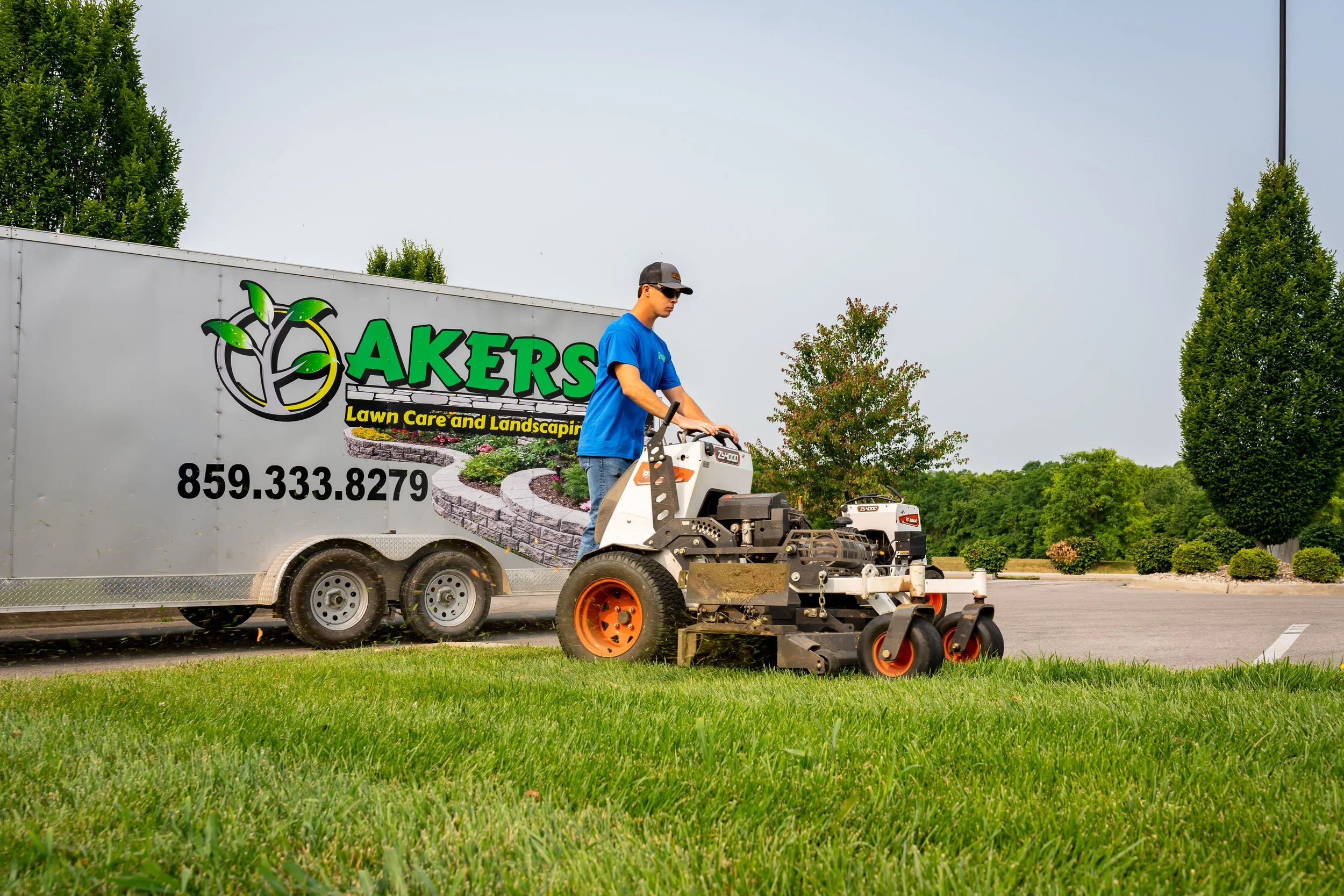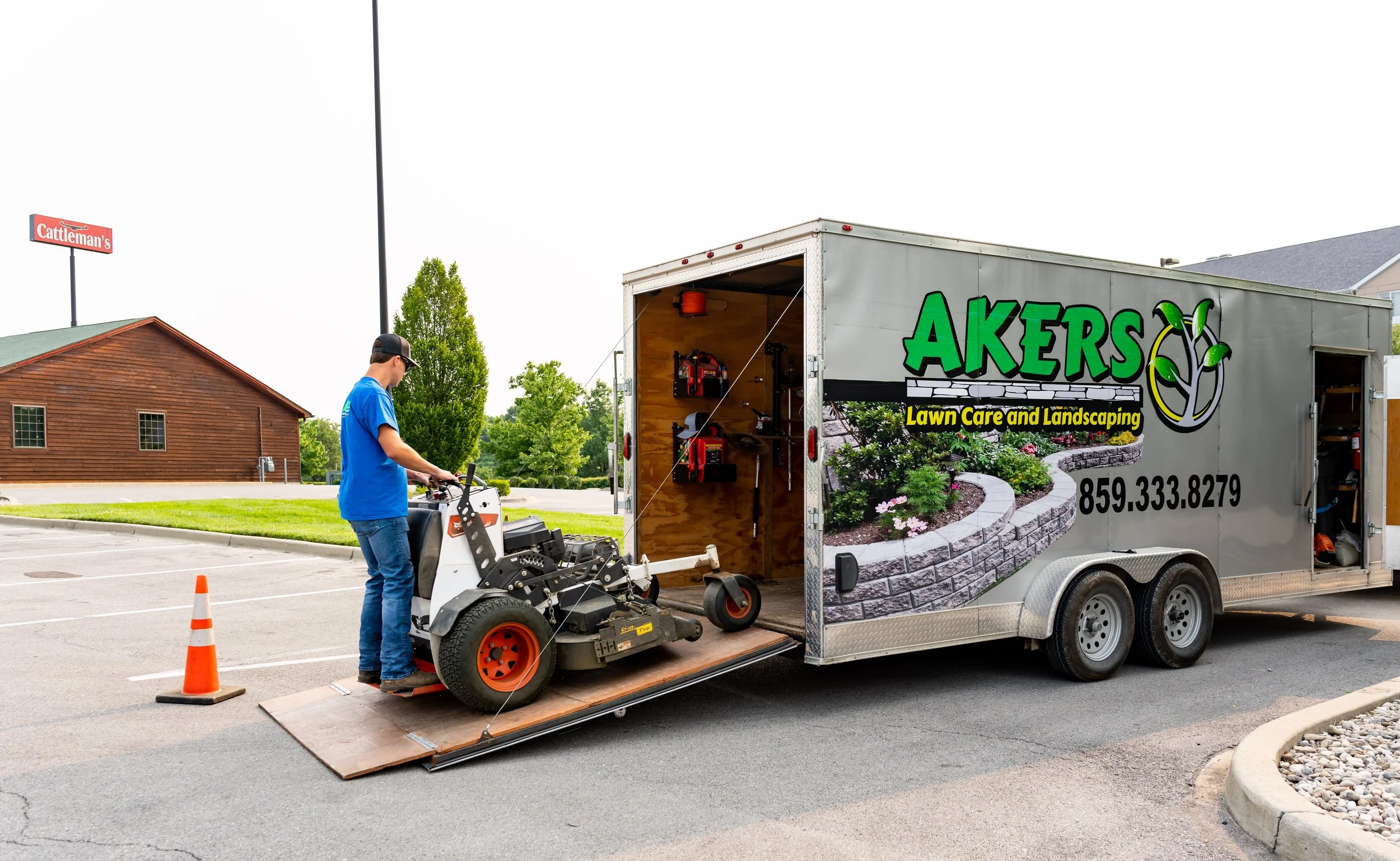Central Kentucky Fall Lawn Care & Landscaping Guide
Fall isn’t just for prepping your yard, you should still be actively taking care of it. As your grass slows its growth, there are specific tasks you can do to maintain health, prevent problems, and set yourself up for success next spring. In this post, we’ll walk through what homeowners in Kentucky should focus on during fall: pruning, mulching, overseeding, cleanup, and more.
Akers Lawn Care and Landscaping ©
1. Keep Mowing While Growth Continues
Your grass won’t stop growing immediately just because autumn arrives. As long as it's still actively growing:
Mow regularly, just reduce the frequency as growth slows.
Gradually lower mowing height before the last cut, but don’t scalp the lawn.
Clear grass clippings or mulched leaves so they don’t smother the turf.
This helps keep the lawn neat, encourages light penetration, and avoids fungal issues.
2. Aerate & Overseed After Removing Debris
Aerating and Overseeding are key fall tasks.
Aeration opens the soil, letting air, water, and nutrients reach the roots.
Overseeding helps fill in thin or bare spots while soil is still warm enough for germination.
Timing is important: aerate first, then seed.
Make sure to remove dead leaves and debris before these steps so seed-to-soil contact is good
For Central Kentucky, doing this in mid to late October (if soil is not yet frozen) usually works best.
Akers Lawn Care and Landscaping ©
3. Prune, Trim, & Tidy Up Landscape Beds
Foliage that’s dying back or overgrown can harbor pest and disease problems over winter:
Remove dead annuals and spent blooms.
Trim back perennials and cut down tall foliage. Leave seed heads if you want them for bird food, but don’t let things overgrow.
Prune dead or weak branches from trees/shrubs before winter weather arrives.
Avoid heavy pruning of woody plants in very late fall—try to finish major pruning before dormancy sets in.
4. Mulch and Protect Beds
Mulching in fall helps regulate soil temps, retain moisture, and suppress weeds:
Add a fresh 2–3 inch layer of mulch around shrubs, trees, and border beds.
Be careful not to pile mulch against trunks or stems (volcano mulching can harm plants).
Turn existing mulch (“fluffing”) before laying fresh mulch.
Use organic materials (wood chips, shredded leaves) so mulch decomposes over winter and contributes nutrients.
5. Leaf and Debris Management
Leftover leaves, branches, and thatch can smother turf or promote fungal disease:
Rake or blow leaves regularly—don’t wait until they pile up.
Mulch light leaf layers with a mower if thickness is low.
Remove dead branches and sticks that have fallen.
Clear out garden debris so pests and diseases don’t overwinter in your beds.
Large accumulations should not be left under shrubs or against the foundation.
Akers Lawn Care and Landscaping ©
6. Adjust Watering and Irrigation
Even in fall, your lawn needs moisture—especially after seeding or aeration:
Reduce overall watering frequency, but don’t let the soil dry out entirely until frost.
If you have an irrigation or drip system, winterize or blow out lines before freezing weather starts.
Adjust irrigation schedules to early morning watering (rather than overnight) to reduce disease risk.
7. Monitor and Treat Pest or Fungal Issues
Though many pests slow down in cool weather, fungal diseases or lingering insect activity can still arise:
Keep an eye out for patchy discoloration, mold, or moss growth.
If you notice signs, address them promptly—better to treat in fall than let problems worsen.
Aeration, good drainage, and debris removal all help reduce disease risk.
8. Plan & Plant for Spring
Fall is also a strategic time to prepare for next year:
Plant cool-season bulbs (e.g. tulips, daffodils) before the ground freezes.
Map out landscape changes you want next spring—beds, hardscaping, garden features.
Order seeds, plants, or materials early so you’re ready when the growing season returns.
Fall is an active window to care for your lawn and landscape. By staying on top of mowing, pruning, seeding, debris cleanup, and monitoring, you can protect your yard now and help it thrive later.
If you’d rather have pros handle these tasks, schedule a fall maintenance service with Akers. We’ll take care of aeration, seeding, pruning, cleanup—and treat your yard like our own.



